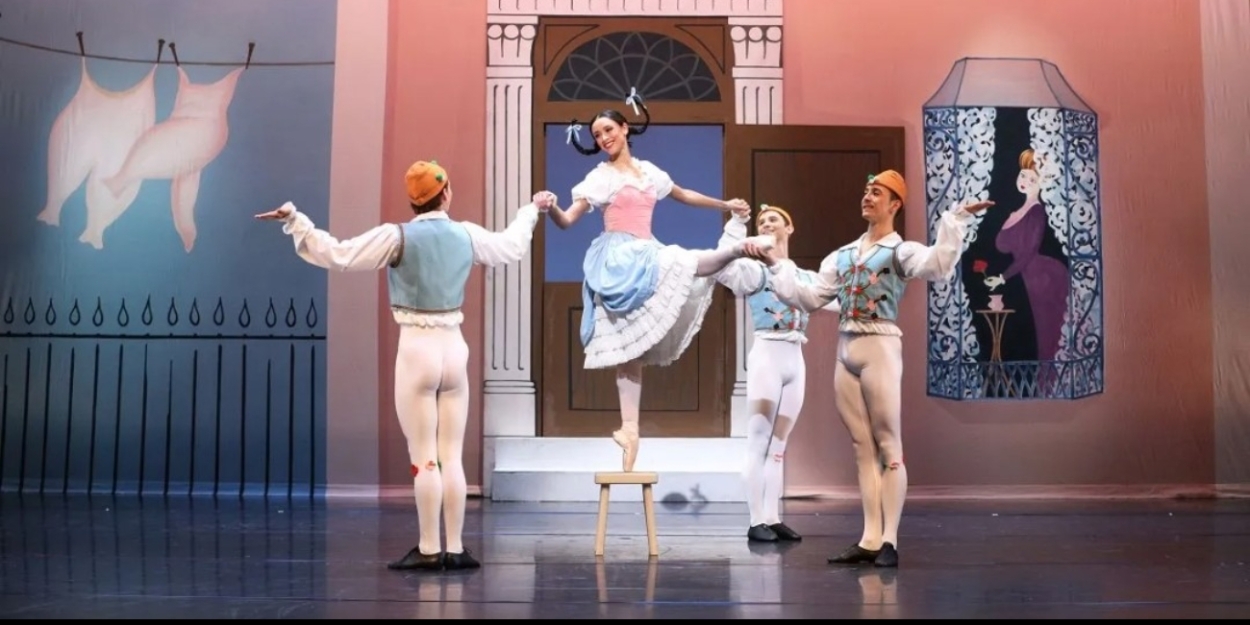Review: SARASOTA BALLET GALA - ASHTON WORLDWIDE, Royal Opera House
Ashton makes interesting artists even more so

![]() The final Ashton Worldwide bill at the Royal Opera House (23-24 season) was a Gala programme performed by the Sarasota Ballet in the Linbury Theatre. Valses Nobles et Sentimentales opened the evening again (reviewed on June 5), and is now joined by three other works.
The final Ashton Worldwide bill at the Royal Opera House (23-24 season) was a Gala programme performed by the Sarasota Ballet in the Linbury Theatre. Valses Nobles et Sentimentales opened the evening again (reviewed on June 5), and is now joined by three other works.
Dance of the Blessed Spirits (1978) was originally choreographed for Anthony Dowell to music by Christoph Willibald Gluck, and for this performance, Royal Ballet First Soloist Joseph Sissens joined the Sarasota Ballet event.
Sissons, as we know, is a beautiful dancer, and brings pathos and pliable aesthetic to the solo. The work's structure is unpredictable, and sees the dancer cover space almost relentlessly, punctuated with moments of enquiring repose. Sissons has a wonderfully buoyant ballon, but the Linbury stage seems to amplify the landings somewhat. This momentarily took away from the spirit feel, but his generous use of the upper body soon drew the mind elsewhere.
Varii Capricci (1983) premiered in New York City 41 years ago, but the current feel is much more Floridian nights. At the Linbury the original David Hockney sets have been replaced with neon projections of palm trees, and I'm afraid the overall impression is one of dated naffness.
One can of course find Ashton motifs throughout, and if demanded, appreciation could be mustered. But as an entire work it isn't for me. There's only so much sultry suggestion one can take, and when the audience giggled at the blatantly obvious “ooh, matron” moments, I remained unmoved, verging on annoyed actually. I don't believe this is the kind of work Ashton should be remembered for. Let's stick to Balanchine’s Who Cares (1970), which takes itself less seriously, yet still manages to be a work of style and content beyond many others.
Closing the gala programme is Façade. First performed in 1931, the work takes inspiration from the poetry of Edith Sitwell, uses the music William Walton created for Sitwell’s prose, and features the sets and costumes of John Armstrong, which all act as a much needed antidote to Varii Capricci.
I've never had the good fortune to see Façade in its entirety before, and now I have, I understand its urban legend level of importance. I find it a transitional work in two key ways: the elevation of music hall style entertainment to the theatre environment, and the use of dance/ballet as a medium for properly funny comedy.
The seven divertissement take the observer to many different geographic locations with associated contexts, and the gags keep coming. We see an exuberant fling in the Scotch Rhapsody, and imaginary milking in the Swiss Jodelling Song. The Polka, created on Alicia Markova I could watch forever, as the concoction of coquettish execution and original dance language feels unparalleled to date! The Foxtrot for two couples is the height of smouldering nuance, and both the Valse for four ladies and Popular Song for two men use deadpan humour to make their point, though the Sarasota women perhaps grin a tad too much in their current rendition.
The final number was another Royal Ballet guest turn with Lauren Cuthbertson and Gary Avis in the Tango-Pasodoble. They seemed to have masses of fun during their camp rendition, and Cuthbertson emanates the diversity of a Royal Ballet ballerina; from Titania the previous night to high-heeled extravagance the next.
The aforementioned range confirms who Ashton is as a dance maker, and what his canon can do for dancers who are lucky enough to experience it. I believe it makes interesting artists more so, which consequently means trips to the theatre are hence worthwhile. We should be thankful for that, and I am.
The Sarasota Ballet gala programme was performed on the evening of June 8 and the matinee of June 9
Photo credit: Frank Atura
Reader Reviews

Videos

